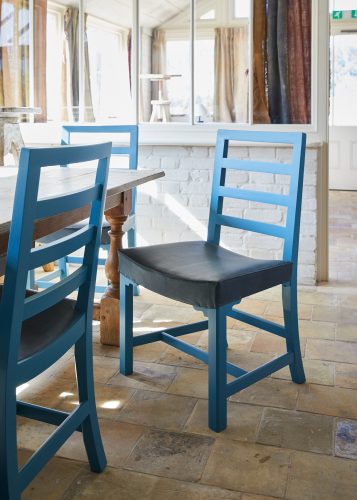
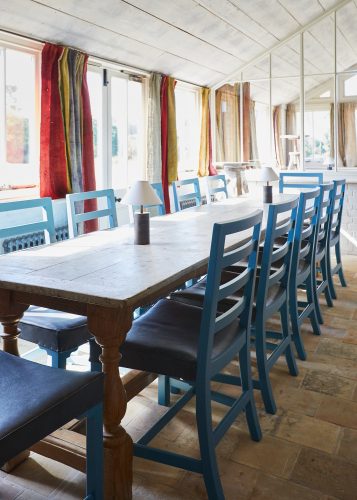
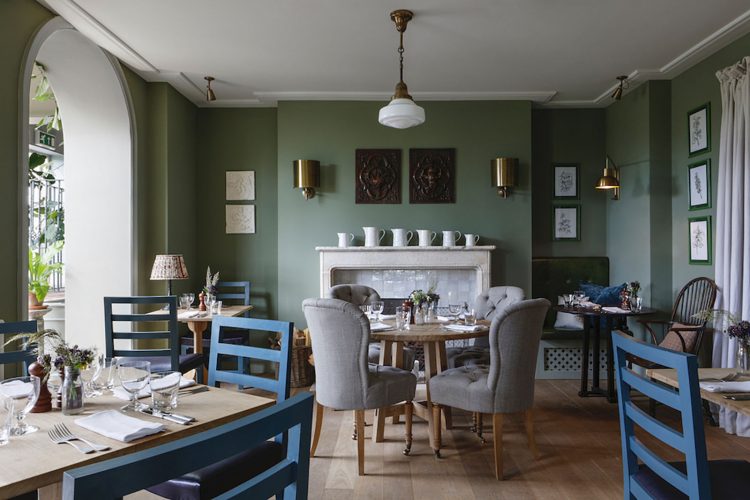
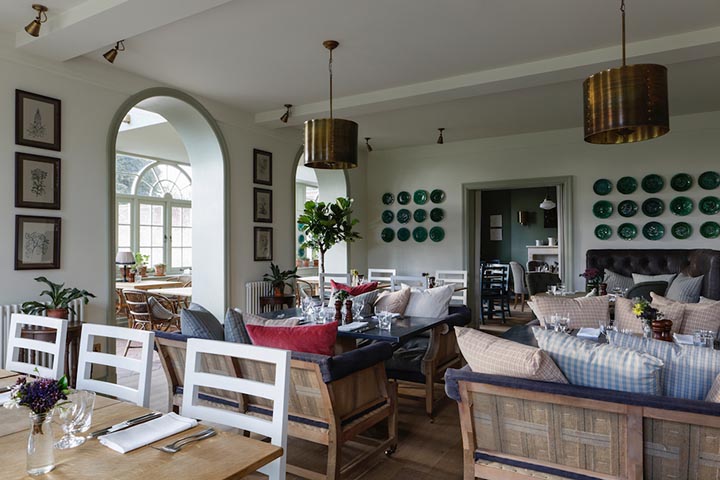
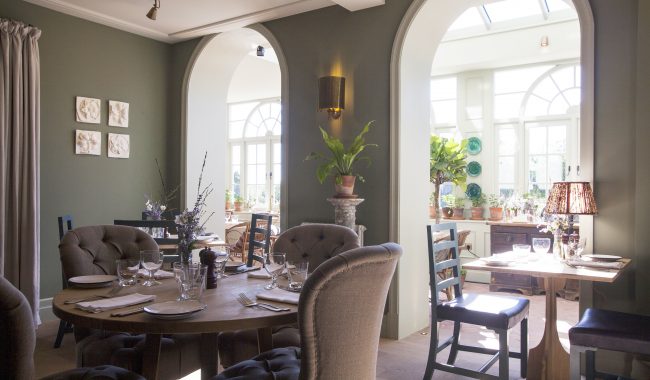
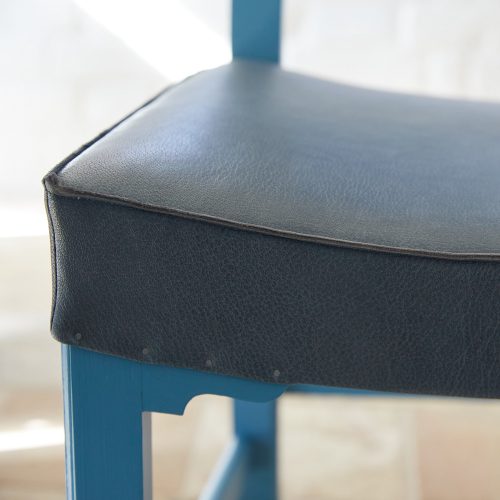
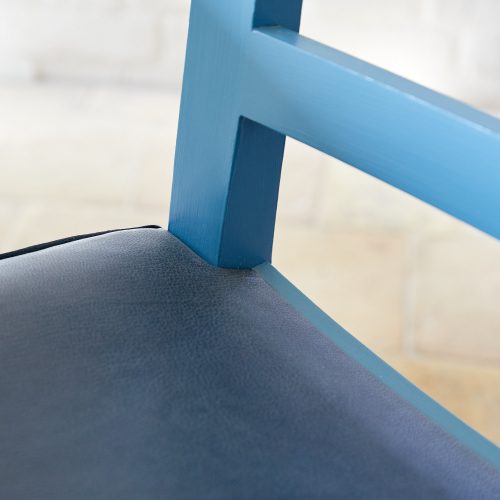
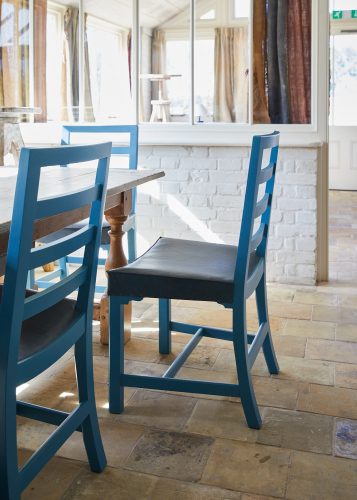
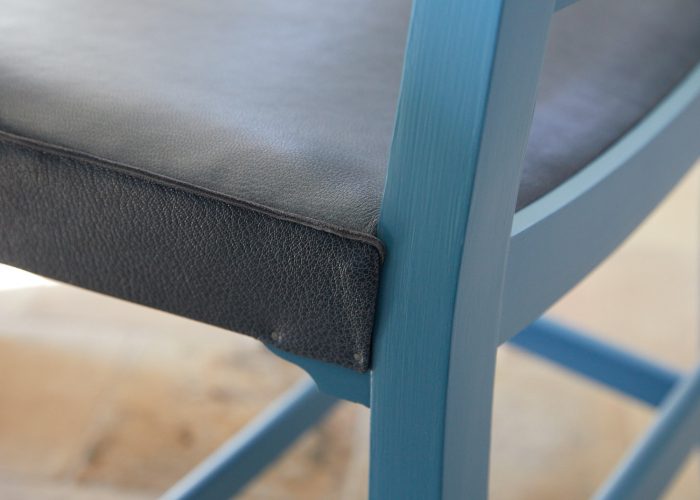
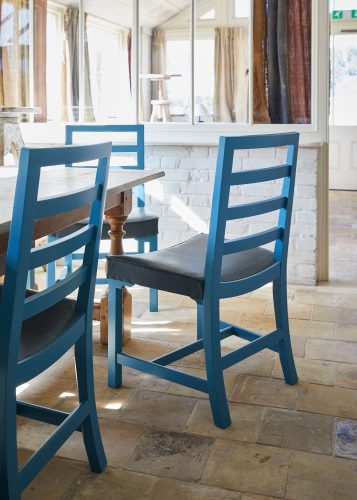
Garden House Ladderback
A distilled version of our Pierced Ladderback dining chair, the Garden House Ladderback honours the C18th sensibilities but brings with it a fresh simplicity and consequential reduction in cost. The enduring comfort of the saddle seat make it as well suited to domestic use as it is commercial settings such as the Garden House restaurant at Beaverbrook or more recently the Suffield Arms.
Desmond Fitzgerald (d.2011), writer of books on Irish furniture and the Irish country house (and 29th Knight of Glin) bought the original set of 8 Pierced Ladderbacks from me back in 2003 for his historic family home, Glin Castle in Co Limerick. He saw in this design the quintessence of George III and 18th Century Irish furniture seeking tropical influence from the Far East, demonstrated by the pierced shapes in the back rails.
The beautiful dark mahogany of the original set was provided by the British East India Company who in the mid C18th were trading in valuable spices like cinnamon and nutmeg, relatively light cargoes which gave rise to the import of ‘exotic’ timbers which had grown slowly over thousands of years on those rocky islands and provided ballast for stability on the homebound trip. Antique furniture became extremely unfashionable in the noughties, yet the pure simplicity of this chair conceals a complexity which makes furniture of this period so special, highly developed and capable of riding the waves of fashion.
We understand and adhere strictly to the traditional C18th chair maker’s methods of construction and timber choice, with every attention to the subtle details which can so easily be overlooked, such as the changing angles of back legs and the location of the stretchers so they are not simply centred but placed almost flush with the outer face of the legs. This operation, though far more exacting and time consuming, is most pleasing to the trained eye. The seats are stitched up in horse hair with crisp box-like edges and a well defined saddle shape, with the greatest individual attention given to the seams and trim, depending on the leather or type of fabric chosen.
Historically these chairs would have been made in mahogany or oak but the choice is yours and as you can see from the examples shown above, the chair can take a bold paint colour. Although this requires a great deal of skill and practice to negotiate the quirks of the frame, we apply the paint by hand with a brush onto a beechwood frame using traditional non-vinyl based paints to ensure the perfect finish.
Craftsmanship and quality are absolutely central to everything we do at Howe London and we are passionate about promoting and preserving traditional skills, click here to read more.Dimensions
Seat Width: 560mm / 22"Seat Width: 560mm / 22"
Max Depth: 540mm / 21¼"
Seat Depth: 430mm / 17"
Max Height: 930mm / 36½"
Seat Height (at centre): 450mm / 17¾"
Seat Height (high point) : 480mm / 19"